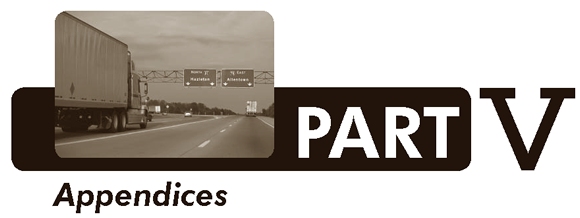
- Appendix A: Highway Investment Analysis Methodology
- Appendix B: Bridge Investment Analysis Methodology
- Appendix C: Transit Investment Analysis Methodology
Introduction
Appendices A, B, and C describe the modeling techniques used to generate the future investment scenario estimates highlighted in Chapters 7 through 10, focusing on changes in methodology since the previous C&P report. All three models incorporate benefit-cost analysis in their selection of transportation capital improvements.
Appendix A describes changes in the Highway Economic Requirements System (HERS), which is used to analyze potential future investments for highway resurfacing and reconstruction and highway and bridge capacity expansion. Significant changes to HERS include updated improvement cost estimates; new procedures to link investment levels and highway user revenues; and the ability to simulate universal congestion pricing.
The National Bridge Investment Analysis System (NBIAS) is the primary tool for analyzing potential future bridge rehabilitation and replacement investments. For this report, the model, which is described in Appendix B, has been revised to consider a broader set of standards in determining functional improvement needs.
Appendix C presents the Transit Economic Requirements Model (TERM), which is used to analyze potential future transit investments in urbanized areas. TERM includes modules which estimate the funding that will be required to replace and rehabilitate transit vehicles and other assets; to invest in new assets to accommodate future transit ridership growth; and to improve operating performance to targeted levels. Major changes reflected in this report include updated asset inventory data; new asset deterioration schedules for stations and systems; and revised benefit-cost analysis parameters.

